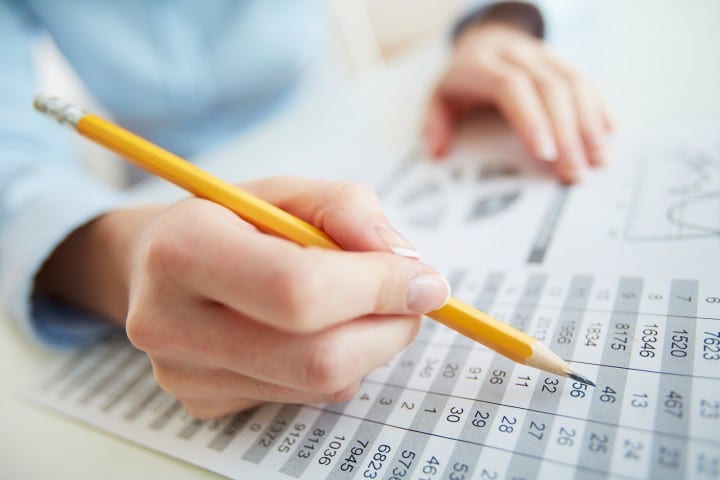As we know, there are two systems of recording transactions in our books of accounts. In the previous chapters, we have learned about the double entry system, now let’s discuss another system of accounting i.e. Single Entry System (SES).
Meaning and Silent Features of SES
For every accounting transaction, everyone does not follow the principle of double entry system of accounts. Some of the small business units do not keep their books of accounts as per double entry system. In simple words, single entry system of accounts mean — the business unit, which does not follow the principle of double entry system.
There are following two types of SES of accounts −
· Pure Single Entry System − Personal accounts like sundry debtors and sundry creditor’s accounts are maintained, but real and nominal accounts are not opened under this system.
· Popular Sense − Under this system, three types of treatment are done.
o Double entry system followed for cash received from the debtors and the cash paid to the creditors.
o Single entry system followed for expenses paid, purchases of goods, purchases of fixed assets etc.
o Provisional entries like bad debts, depreciation, etc. are not done.
Difference between SES and DES
· Single entry is an in-complete system of accounting, whereas double entry system (DES) is a complete system of accounting transactions.
· There is no reliability on books in a single entry system, whereas double entry system is a reliable accounting system.
· Checking of the arithmetical accuracy is possible in a double entry system through preparation of trial balance, whereas it is not possible under a single entry system.
· Since, single entry system does not maintain Trading, and Profit & Loss Account, and Balance Sheet; hence, ascertainment of the actual profit and exact financial position of the firms is not possible, on the other hand, all above is quite possible under the double entry system of accounting.
Limitations of SES
· Single entry system of accounts do not record two-fold aspects of each and every transactions, hence, it is not a scientific system of keeping accounting records.
· Checking of the arithmetical accuracy is not possible due to non-preparation of a trial balance. Preparation of a trial balance is not possible, because the method of double entry system is not followed for each business transaction.
· Ascertainment of the actual profit of a concern is not possible, as nominal accounts are kept under single entry system. In the absence of nominal accounts, Trading and Profit & Loss account cannot be prepared.
· It is not possible to find the exact financial position of a firm in the absence of real accounts, because without real accounts, it is not possible to prepare the Balance sheet of a firm on a particular day.
· Outsiders never rely on the books of accounts of a firm.
· In case where owner of the business wants to sell his business, ascertainment of exact value of the business is not possible, especially goodwill value of the firm.
· Single entry system is practiced only by the small business units.
Preparation of Statement of Affairs
To know the financial position of a business, the list of assets & liabilities and statement of affairs are prepared on the last date of accounting period. As stated earlier, in the absence of real accounts, it is not possible to prepare a Balance sheet.
Following points are required to prepare the statement of affairs −
· With the help of personal accounts, a list of debtors and creditors should be prepared.
· Stock valuation method will be either on cost or market price, whichever is lower.
· Cash book balance should be physically verified with the cash book.
· Bank balance should also be reconciled with the Bank statements.
· Statement of affairs should contain the income received in advance and the expenses paid in advance.
· Excess of assets over liabilities will be capital of the proprietor or firm.
· Basis for the valuation of fixed assets will be the purchased voucher and any other available evidence.
How does the Statement of affairs Differ from Balance-Sheet?
Main difference between the statement of affairs and the Balance sheet is —reliability on first is prepared through incomplete information and on later is based on the scientific method of the double entry system of accounts.
Ascertainment of Profit under SES
We have the following two methods to ascertain the profit under single entry system −
- Statement of Affairs or Net worth Method and
- Conversion Method
Net worth Method
Under the single entry system, the ascertainment of the profit can be done without preparing a Trading and Profit & Loss account. For example,
| 1 | To know the capital at the beginning of the year or at the last date of the preceding accounting year, first step is to prepare the statement of affairs at the beginning of the year. |
| 2 | One statement of affairs should be prepared on the last date of accounting year to ascertain. |
| 3 | Drawing should be added to the amount of capital as ascertained at the end of the year and the capital introduced if, any, during the year will be subtracted. |
| 4 | Capital introduced if, any, during the year will be subtracted. |
| 5 | Difference of (3) – (1) will be the profit or loss for the year. If, (3) is more than (1), then it is a profit or vice versa. |
| 6 | The amount of profit or loss as calculated by the step No. (4) above, will be adjusted by the interest on capital and the interest on drawing (to ascertain Net Profit of the firm). |
Conversion Method
Under the conversion method system of accounting, change from the single entry system to the double entry system on a particular date can be done by the following procedure −
· Statement of affairs should prepare on the date on which the change need to be made. After the proper checking and verification of such balances from available records, all the balances like cash balance, bank balance, assets, liabilities, debtors, and creditors should appear in the statement of affairs.
· An opening journal entry should be made to bring into the books as −
Journal Entry
| AssetAA/cDrAssetBA/cDrAssetCA/cDr |
| LiabilitiesAA/cLiabilitiesBA/cLiabilitiesCA/c |
| Being all assets and all liabilities brought forward from the statement of affairs a/c. |
Above entry will be a base entry to open all new books under the double entry system of accounts and all the future transactions will be booked according to the double entry system as explained earlier.
Conversion of Books of Last Year from SES into DES
To convert books of the last year from single entry to double entry system, it will be assumed that all the subsidiary books are maintained properly under the single entry system. However, following procedures need to be followed −
Where Cash Book, Personal Books, and Subsidiary Books are Maintained −
· Opening statement of the affairs should be prepared at the beginning of the period.
· All the impersonal accounts as appeared in the cash book should be posted in the respective impersonal accounts, if it has not been done earlier.
· New impersonal accounts need to be opened through total of the subsidiary books. For example, with the total of sales book and purchase book, sale account will be credited and purchase account will be debited, vice versa in case of returns.
· All the new account should be opened for the entries relating to discount, rebates, bad debts, etc. which are not passed through the subsidiary books. This procedure will give two-folds effect of such transaction as appeared in the personal accounts.
· Month-wise positing should be done to the ledger accounts through petty cash book, if, maintained by the firm.
· After completion of the above procedure, a trial balance should be prepared to confirm the arithmetical accuracy of the books of accounts.
· After completion of the above procedure of trial balance, Trading and Profit & Loss account and Balance sheet should be prepared (after considering all the adjustments like prepaid expenses, outstanding expenses, income received in advance, or receivables as well as the provisions for depreciations, doubtful debts etc.
Where only Cash Book and Personal Books are Maintained
In this case, a different procedure of conversion will be followed −
· As described earlier, an opening statement of the affairs should be prepared at the beginning of the period.
· All the real and nominal accounts as appeared in the cash book and not posted earlier in any account, should be posted in respective accounts.
· An analysis of debit and credit side of personal accounts like debtors accounts and creditors accounts will be done as per the method given below −
Summary of Analysis to be Done
| Sr.No. | Debit side of Creditors’ Accounts | Debit side of Debtors’ Accounts |
| 1 | Bills payables | Opening balance as appeared in opening Statement of Affairs |
| 2 | Discounts and rebates received | Sale (Credit) |
| 3 | Return inward (Purchase returns) | Transfers |
| 4 | Transfers | Bills receivables (Dishonored) |
| 5 | Cash paid to Creditors | |
| 6 | Endorsement of Bills Receivables in favor of Creditors |
| Sr.No. | Credit side of Debtors’ Accounts | Credit side of Creditors’ accounts |
| 1 | Cash received | Opening balance as appeared in opening Statement of Affairs |
| 2 | Discount Allowed | Purchases (Credit) |
| 3 | Bills receivables received | Transfers |
| 4 | Discount and allowances | Bills payables (dishonored) |
| 5 | Transfers | |
| 6 | Goods returned (Sales returns) | |
| 7 | Bad Debts |


